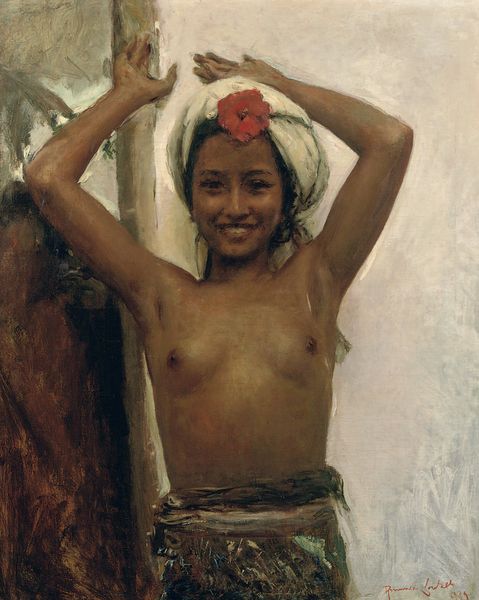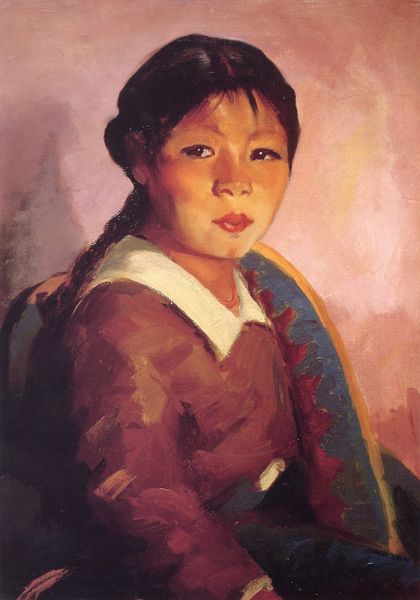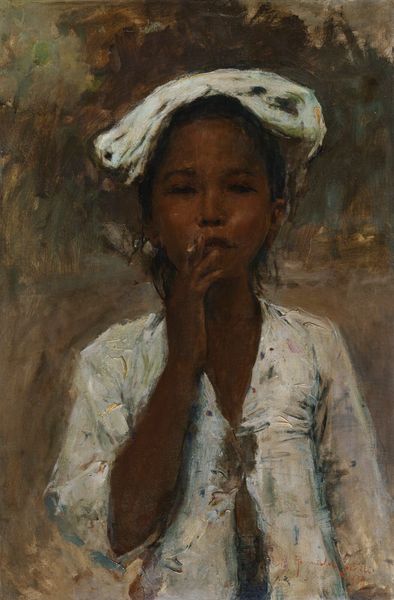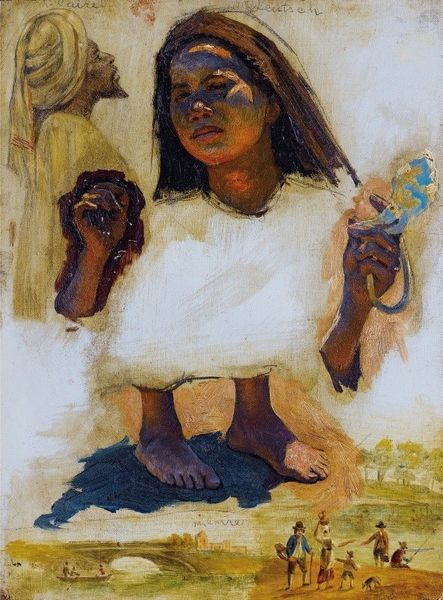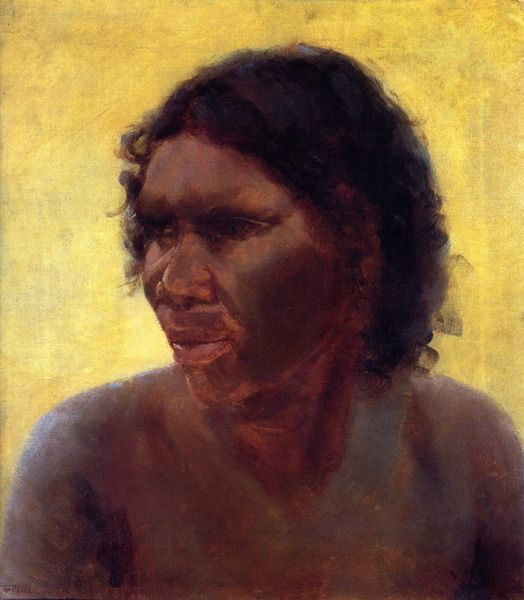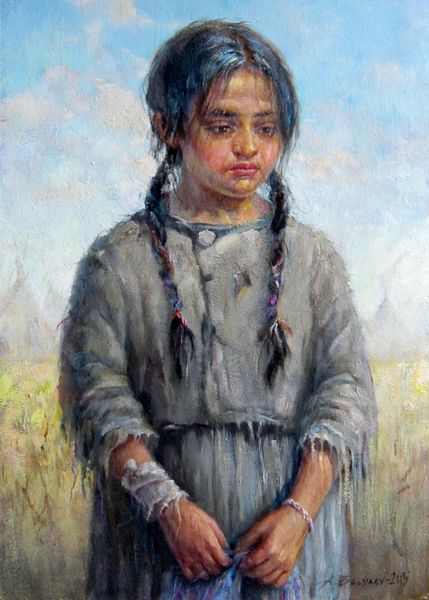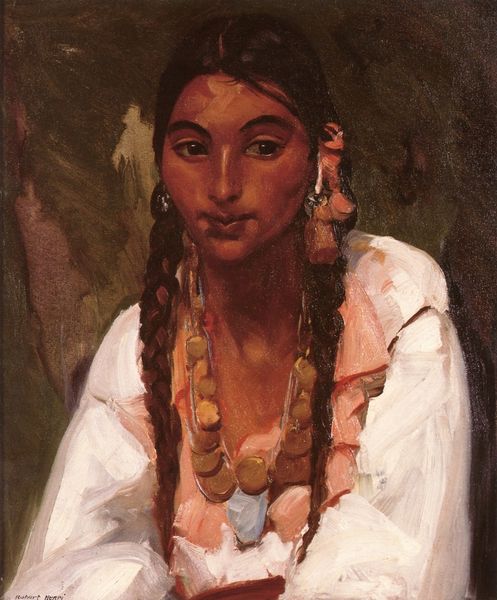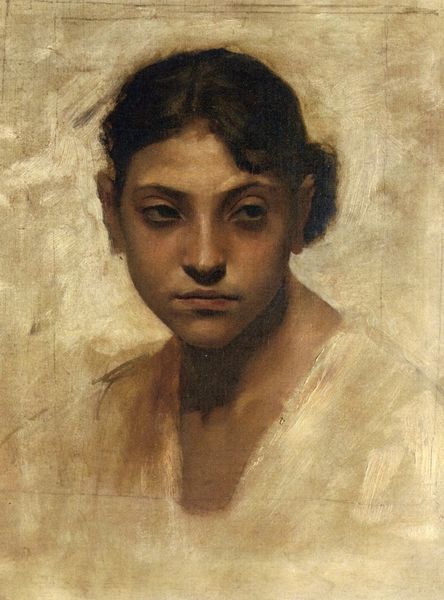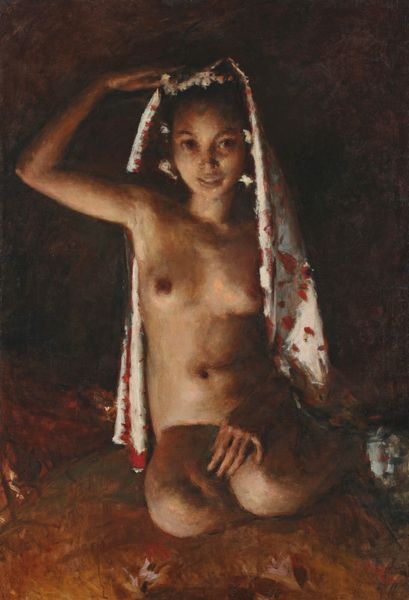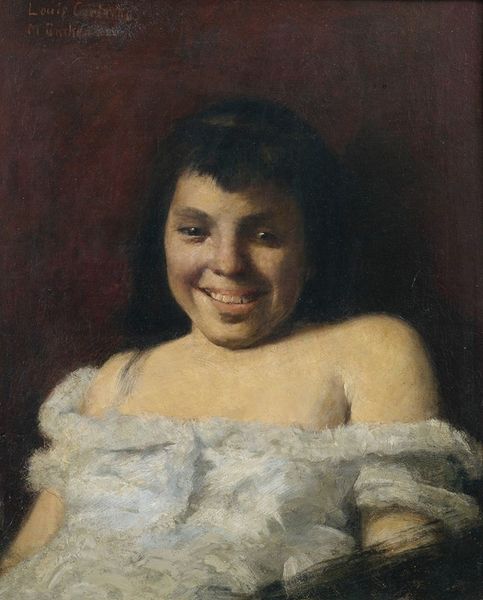
painting, oil-paint
#
portrait
#
painting
#
oil-paint
#
oil painting
#
nude
#
portrait art
#
realism
Dimensions: 100 x 60 cm
Copyright: Public domain
Editor: This is Romualdo Locatelli's "Portrait of a Young Girl," painted in 1939. It’s an oil painting, and there’s a certain vulnerability about her gaze that's quite striking. What's your interpretation of this work? Curator: Locatelli, an Italian artist who travelled extensively, painted this during a time when the colonial gaze heavily influenced portrayals of non-Western subjects. Notice how he positions the young girl – the slight nudity, the exoticized flower. We must ask ourselves, whose perspective is truly being represented here? Editor: That's interesting. I hadn't considered the colonial context. Do you think the flower has symbolic meaning within that framework? Curator: Absolutely. The flower, likely a jasmine or similar tropical bloom, becomes a symbol not just of beauty, but of a feminized, naturalized 'other'. Consider the power dynamics inherent in an artist from a colonizing nation depicting a young woman from a culture he’s likely appropriating. Does she have agency, or is she merely an object of the Western gaze? Editor: So, the beauty we see on the surface might mask a more complex narrative about cultural representation and power. Is it problematic to even appreciate it aesthetically? Curator: Appreciation is not inherently problematic, but critical engagement is crucial. We must acknowledge the historical context and interrogate the power dynamics at play. Asking "who benefits from this image and how?" allows us a fuller, more ethical understanding. Editor: It definitely makes you think differently about the image. Thanks for sharing your perspective! Curator: And thank you for raising such important questions. It's through dialogue that we can unpack these complex layers within art history.
Comments
No comments
Be the first to comment and join the conversation on the ultimate creative platform.
